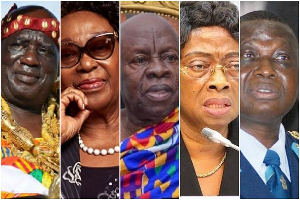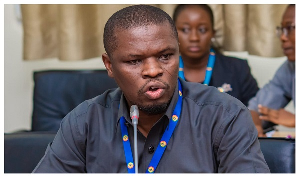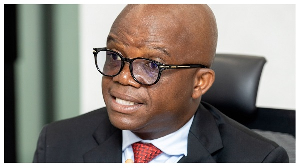One of the least discussed branding topic is that of brand personality because, there’s usually a confusion regarding what it really means and its relevance.
One of the reasons that account for this, in my opinion, is that, most brands do not exhibit strong personalities or do not project their personality but are rather fixated with projecting their brand positioning.
This article will discuss the concept of brand positioning and brand personality and use Citi Fm as a classic case to illustrate the concept of brand personality in a very basic manner.
What is brand personality?
Brand personality is the humanized personality characteristics attributed to an organizations or brand. To understand brand personality, you need to ask a very simple question; if the brand was a human being, what humanized traits would it exhibit? For example, being mature, liberal, friendly, ambitious, warm, caring etc.
One of the models for identifying brand personalities is that of Aaker (1997) who developed a brand personality framework to measure the personality of brands on five dimensions; sincerity, excitement, competence, sophistication and ruggedness. However, brands can exhibit various humanized personalities as explained.
From personal experiences, corporate culture is a strong driver of brand personality.
What’s brand positioning?
Brand positioning relates to the image an organization intends to create in the minds of its target audience relative to competitors. There’s a saying that, products are made in the factory but brands are made in the minds. Therefore, everything about a brand ought to be consciously designed to re-inforce the intended positioning i.e. logo, colours, tone of communication, brand associations etc.
Are they the same?
This is where the confusion arises. Brand positioning and brand personality are not the same, however, they can be the same.
In developing brand strategies, brands decide what their strategic positioning will be, based on their vision, mission and corporate objectives. The positioning will obviously be informed by detailed macro and micro environmental analysis with key focus on the brand’s RELEVANT competitive advantage. The organization then applies all efforts to ensure that every facet of the organization’s operations, brand identity, and communications project the intended positioning. For example, the local dealership for a luxury brand like Mercedes is located at the plush Silver Star Towers at Airport, will only advertise in upscale magazines and national newspapers targeted at the upscale segment of the market, most likely to adopt only full page coloured adverts etc.
However, brand personalities can be developed unconsciously by how key characters associated with the brand behave. Globally, the Virgin brand owned by Sir Richard Branson is known to be innovative, fun, adventurous and reflects the personality of Richard Brandson who is regarded as fun, adventurous, innovative and an optimist. He’s the first person to have attempted to circumnavigate the world in a hot air balloon. He’s known for attempting various stunts and currently holds the record for the fastest crossing of the English Channel in an amphibious vehicle.
Therefore, if a brand positions itself as being highly innovative and also exhibit the personality of being adventurous and innovative, then the personality and the positioning become the same. If there’s a convergence between a brand’s positioning and personality, the brand’s equity becomes stronger because there’s a single consistent narrative that drives the brand, which in turn results in stronger brand recognition and brand image.
It’s obvious from observations that the founder/leader/CEO of an organization can influence the personality of the Corporate Brand if they exhibit a high level of visibility. In Ghana, Prince Kofi Amoabeng defined the UT brand with his disciplined, principled, “can-do” disposition. UT was therefore perceived as a no-nonsense brand.
In the media industry, the key actors who interact with the target audience can define the personality of the media brand. This is because; they build deep emotional bonds with listeners over the years by feeding these listeners with information almost on a daily basis.
The Citi Fm brand positions itself as offering “Relevant Radio Always”. The brand positioning is anchored by the Citi Breakfast Show (CBS) team led by Bernard Avle who delivers solid programming, spiced with intelligent and RELEVANT analysis. The brand also consciously associates itself with its Ghanaian identity and celebrates Ghanaian culture and arts through MOGO (Music of Ghanaian Origin) and other tourism events. It also organizes various fun trips and events like the Business Olympics, etc.
In terms of Citi FM’s brand personality, the brand can be described as that middle class guy in the neighbourhood who plays football with the boys and joins them to eat waakye at Hajia’s joint under the tree. He’s also the one who settles the intellectual argument in the hood and is perceived as very intelligent and wise. He is seen as “real” so though he’s a middle class boy, he appeals to a wide range of people across various social classes and demography.
In my opinion, Citi FM’s personality is largely shaped by the Managing Director; Samuel Atta-Mensah (Sammens) and the Morning Show team led by Bernard Avle. Sammens is highly visible, extremely approachable, speaks his mind, easy going and intelligent with a great sense of humour. He’s your pidgin-speaking MD!
Bernard Avle, on the other hand, is not afraid to speak his mind and take the side of right! He cares less who you are or what you think, if he thinks your actions are illogical, he will say it as it is and give you sound analysis as to why you are not making sense. He also has a very likable personality and is very respected by his peers in the industry.
Both Sammens and Bernard have a lot in common; they are both seen as witty, intelligent, unpretentious (real), fun-loving and as such they resonate strongly with the ordinary Ghanaian.
The other guys on the CBS team like Kojo Akoto Boateng and Richard Sky are also “vocal”, funny, intelligent and affable. Kojo for example, has carved a niche for himself as the energy and environment specialist and is quick to provide deep insights and analysis in the sector.
From the foregoing, I can confidently say the following descriptors largely describe the Citi FM brand;
• Sincere
• Exciting
• Intelligent
The brand thus explicitly exhibits about three personality traits in Aaker’s five-factor model. The corporate culture at Citi is also strongly reflected in its personality which is also strongly reflected in its brand positioning. This article is from my personal observations and it will be interesting to see the extent to which the Citi brand exhibits these traits in an academic research article.
How can brands harness their personality?
Brands can only harness their brand personality if they know and understand what their brand personality is.
It will, therefore, be critical for brands to periodically conduct brand personality research to identify the humanized personality characteristics associated with their brand. The research can also give indications as to what traits the brand can leverage in its brand positioning and communications or what traits it needs to make concerted efforts to shed. It can also help identify what new markets to serve, what new products and services to introduce and vice-versa.
A brand that paid dearly for underrating its personality was the Harley Davidson brand. Harley-Davidson has a very rugged and masculine personality so when it launched a range of fragrances, it did not resonate well with its loyal customers because they could not reconcile the brand’s rugged personality with fragrances, which in their opinion is quite feminine in terms of personality (Haig, 2003).
I believe it’s time for corporate Ghana to pay equal attention to brand personality, as it pays to the development of brand identity elements and brand positioning.
Opinions of Wednesday, 27 September 2017
Columnist: Nana Yaw Kesse



















